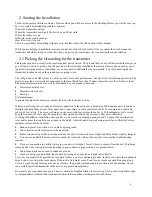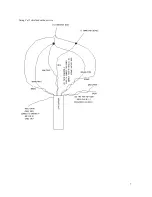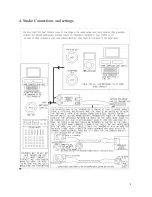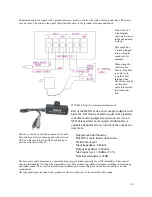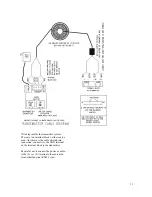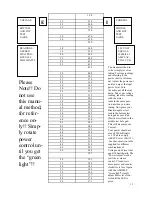
8. General Specifications
We stock crystals 1590Khz 1600Khz 1610Khz 1620Khz 1630Khz 1640Khz 1650Khz 1660Khz
1670Khz 1680Khz 1690Khz 1700Khz but can order other channels.
Am1000C is the crystal controlled model Am1000A is the frequency agile model (set channel with
switches, no crystal needed)
Outdoor Box Size
4.65" x 3.64" x 8.65" High (11" including ant. mount)
Mount holes are at 8.03" x 3.23" centers (#10 screw) Outdoor unit weight 2.85lb
Stainless Antenna .75lb Standard 102" CB whip 3/8 x 24 base
Allow 1lb for 2 mounting bracket bars.
Operating range -40 - +60 C
Outdoor box is .25" thick fiberglass construction
Stability A/- 2 Hz A/- 10 Hz
12-18 VDC at .1 AMP
Audio Sensitivity Adjustable from -10db to 0 Gain
9. FCC information
See the website for current FCC information
Generally the Spirit of the Part 15 law seems to be not to cause interference to a licensed station. We
here at RangeMaster follow FCC law. Of course you should follow FCC law and fully cooperate with
the FCC. Here is subpart 15.219:
”Section 15.219 Operation in the band 510 - 1705 kHz.
(a) The total input power to the final radio frequency stage (exclusive of filament or heaterpower)
shall not exceed 100 milliwatts.
(b) The total length of the transmission line, antenna and ground lead (if used) shall not exceed
3meters.
(c) All emissions below 510 kHz or above 1705 kHz shall be attenuated at least 20 dB below the lev-
el of the unmodulated carrier. Determination of compliance with the 20 dB attenuation specifica-
tion may be based on measurements at the intentional radiator's antenna output terminal unless the
intentional radiator uses a permanently attached antenna, in which case compliance shall be
demonstrated by measuring the radiated emissions.”
Another legal issue is station identification. Here is the rule on that issue : (Title47 Sec. 73.3550) Us-
ers of non licensed, low-power devices operating under part 15 of this chapter may use whatever iden-
tification is currently desired, so long as propriety is observed and no confusion results with a station
for which the FCC issues a license. Please note that FCC regulations do not allow an antenna in ex-
cess on 3 meters in length, currently any ground wire can be considered part of this antenna length
calculation.
17
Summary of Contents for HAMILTON AM1000
Page 7: ...Using Cat 5 shielded outdoor wire 7 ...
Page 8: ...4 Studio Connections and settings 8 ...
Page 14: ...6 Trying to get good Range 14 ...
Page 19: ...19 11 Certification ...


